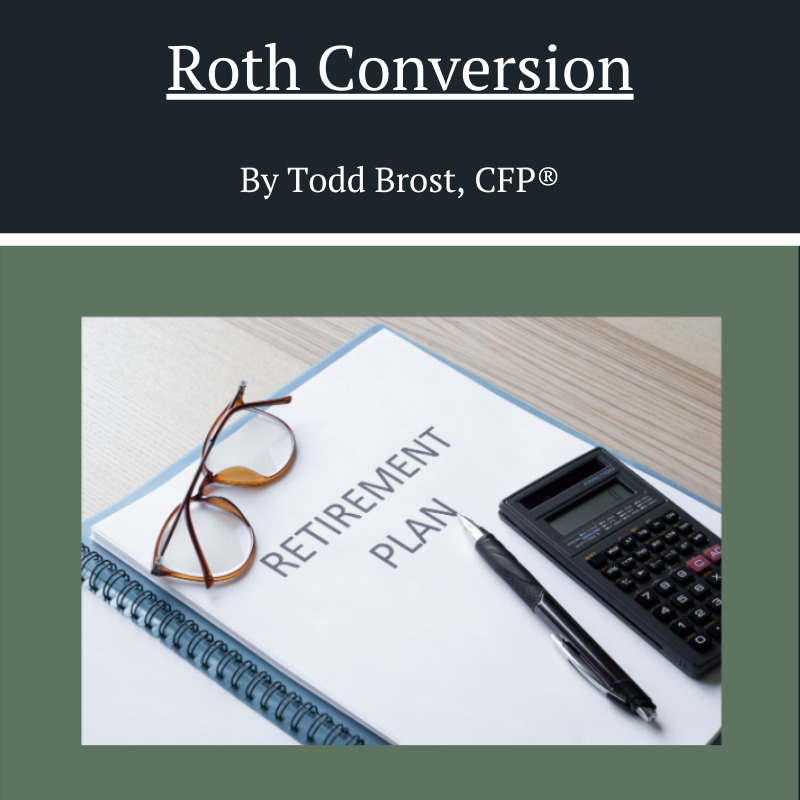By Todd Brost, CFP®
History of the Roth IRA?
- It is named after the late U.S. Senator William V. Roth Jr., who was a WWII veteran, a lawyer, and the legislation’s sponsor.
- It was created by the Taxpayer Relief Act of 1997.
- Contributions to Roth IRAs grew from $8.6 billion in 1998, to $605 billion in 2015.
- In 2006, Roth contributions were allowed in 401(k) and 403(b) plans.
- In 2010, Roth contributions were additionally allowed in governmental 457 plans.
Roth vs. IRA
- IRA
– Pre-tax contributions
– Grows tax deferred
– Withdrawals are taxable
- Roth
– After-tax contributions
– Grows tax free
– Withdrawals not taxable
What is a Roth conversion?
A Roth conversion occurs when assets from a Traditional IRA, Simplified Employee Pension Plan (SEP) IRA, or a Savings Incentive Match Plan for Employees (SIMPLE) Plan are transferred into a Roth IRA. The amount transferred is taxable at one’s ordinary income tax rate.
Why would one choose to pay tax now?
The answer to this question is based on tax rate comparisons. If one is in a lower tax bracket currently versus what they could be at in retirement or later in life, then a Roth conversion makes sense. With current levels of government debt, many find it difficult to expect tax rates to go down at any time soon. By converting now, one actually removes some future tax bracket uncertainty by locking in and paying at current rates.
There has to be more to this decision…?
For higher income earners, they often get phased out from being able to make Roth Contributions. For 2021, these phase out income amounts are $124k – $139k for Single filers and $196k – $206k for Married Filing Joint filers. So as a work around, a non-deductible IRA contribution can be made and then later converted to a Roth IRA.
In retirement, RMDs (Required Minimum Distributions) have to be taken from Traditional IRAs starting at age 72. One of the best features of a Roth is that there are no RMDs. So by having more assets in Roth IRAs at retirement, one can keep their annual AGI (adjusted gross income) down. This will allow less Social Security income to be taxable, reduce the medical expense hurdle and possibly allow more of these expenses to be deductible, and potentially keep your Medicare premiums at lower levels.
A prime example of when to complete a Roth conversion would be in between retirement and starting Social Security. Income would be low and lower tax brackets could get strategically filled up with appropriate Roth conversion amounts. Finally, kids and grandkids are huge fans of Roth conversions because when they inherit these assets, they are actually getting a 10 year tax free annuity… thank you very much!







